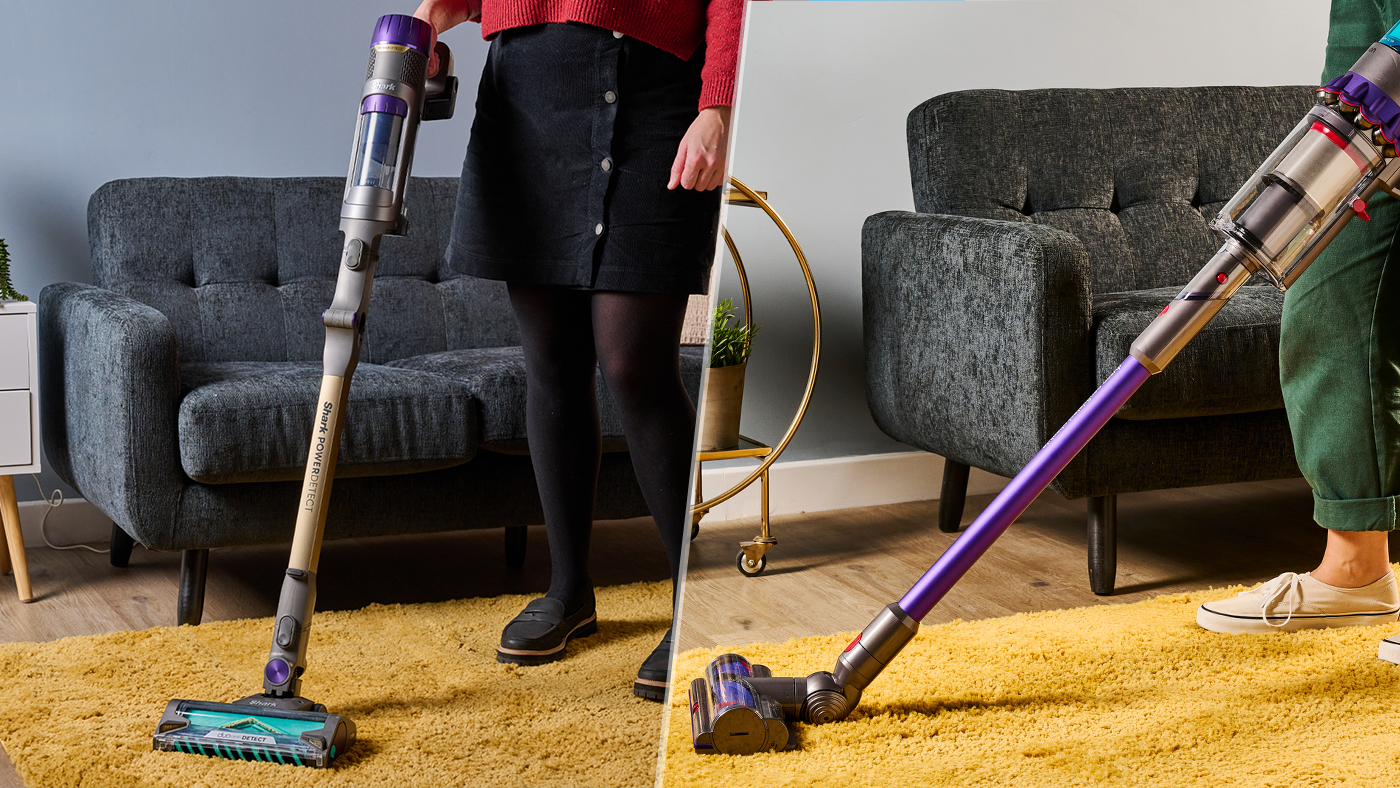
The Dyson Gen5detect and Shark PowerDetect Cordless both sit at the top of their respective brands' ranges. They're amongst the best vacuum cleaners on the market right now, so which one should you buy? I tested both, side-by-side, and here's what I found...
The Dyson Gen5detect launched in 2022, although we didn't get it in the US and UK until 2023. It's the best Dyson vacuum in terms of specs and features, with a more powerful motor than its predecessor, the ability to detect the size and volume of particles it's sucking up, adjust power in response, and report it all back in real time on its LCD screen. You can get the full low-down in our Dyson Gen5detect review.
The Shark PowerDetect Cordless is newer – it hit the market in September 2024 – and it's the best Shark vacuum based on specs. It, too, will adjust suction based on dirt levels and floor type (although it won't report back on-screen). As a bonus, it'll also detect when it's close to the edge of a room, and boost power there too. A big potential bonus here is the optional auto-empty base, which sucks all the dust out of the onboard bin when the vacuum is docked. Find out more in our Shark PowerDetect cordless stick vacuum review.
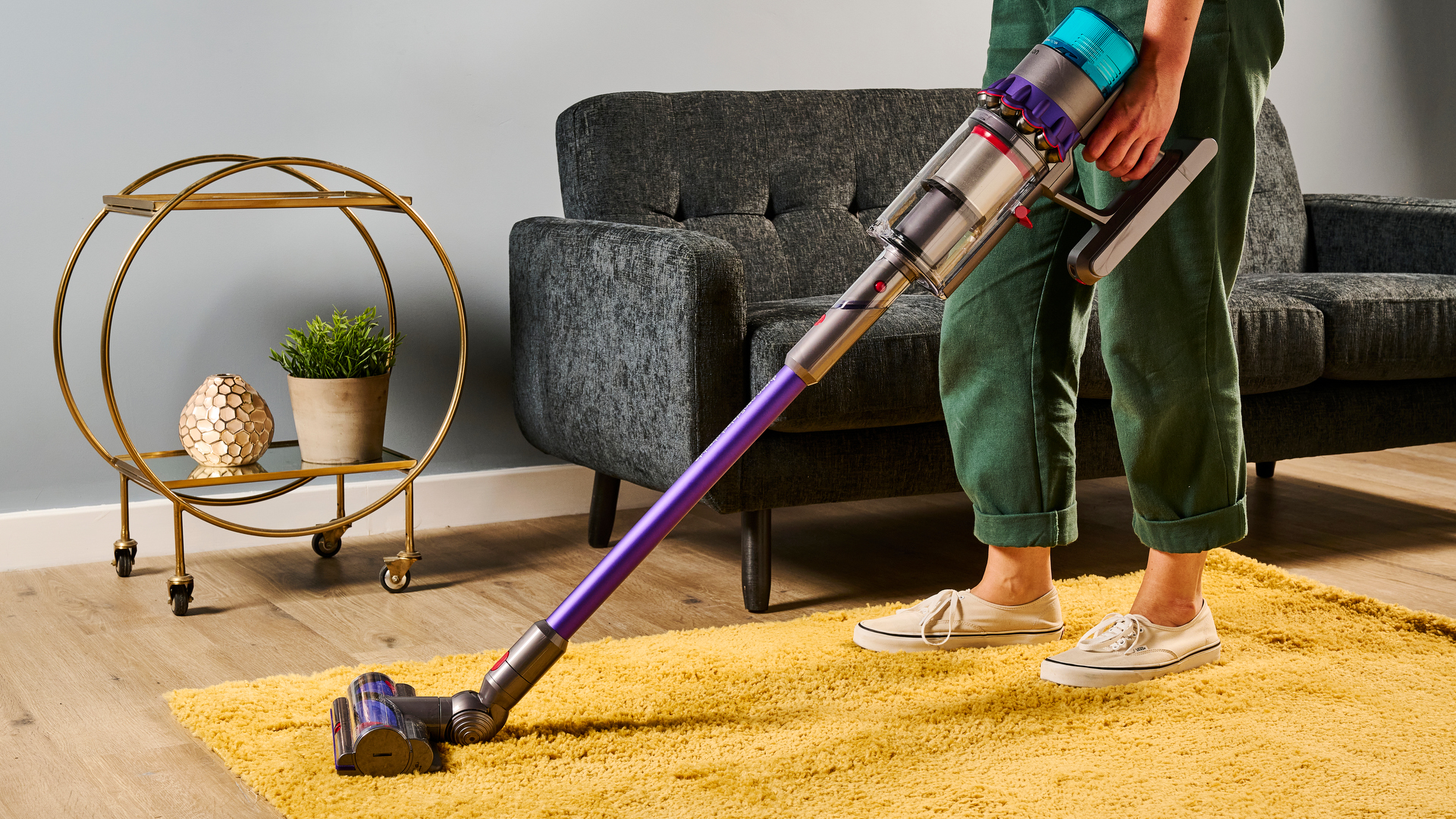
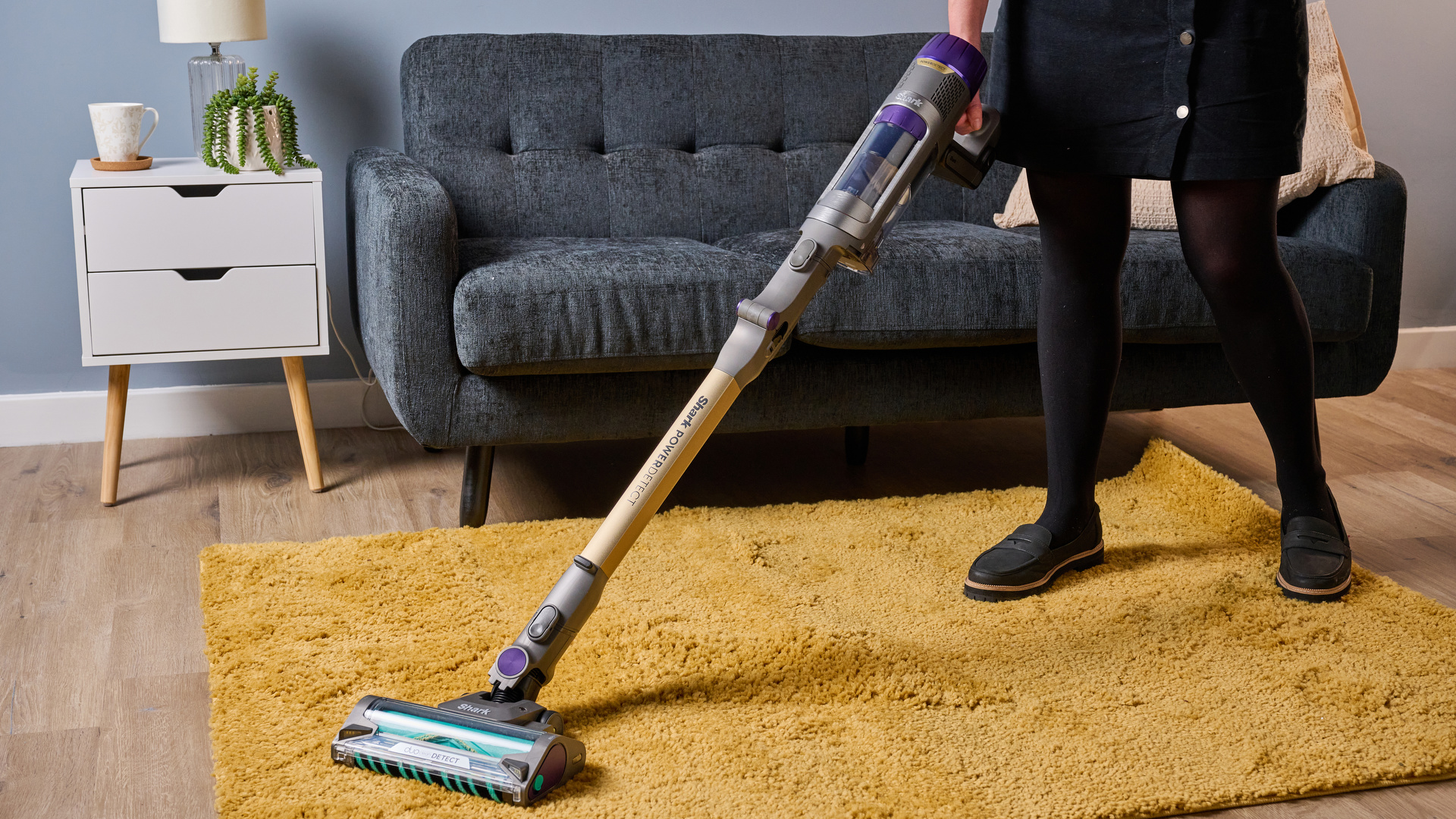
So which is the best cordless vacuum for you? I think the Dyson Gen5detect is the better quality vacuum. It's more maneuverable, the tools are better thought out, and the bonus soft cleaner head is ultra-helpful if you have hard floors. However, the Shark PowerDetect Cordless is significantly cheaper, better at cleaning edges and chunky spillages, and the auto-empty base is a big effort-saver as well as being a win for allergy sufferers (it does cost extra, though).
For a more general overview of how these two brands compare, head to my Dyson vs Shark vacuums head-to-head. Otherwise, read on to find out exactly how the Gen5detect and PowerDetect cordless match up...
Dyson Gen5detect vs Shark PowerDetect Cordless specs
Dyson Gen5detect vs Shark PowerDetect Cordless: price & value for money
- Gen5detect list price: from $949.99 / £769.99 / AU$1,549
- PowerDetect cordless list price: $429.99 / £499.99 / AU$849.99
- Shark better value, although Dyson does feel higher quality
In the US, the Gen5detect costs $949.99 at list price. You can also pick up an 'Absolute' version, in a different colorway, for the same price. The Shark PowerDetect Cordless Stick Vacuum costs $429.99, or $499.99 if you go for the version with the auto-empty base.
In the UK the Gen5detect has a list price of of £769.99, while the PowerDetect on its own is £499.99, or £549.99 for the version with the special base.
For shoppers in Australia, the Gen5detect is only available in its 'Absolute' variant, and costs AU$1,549. The PowerDetect costs AU$849.99 or with an upgraded base for AU$999.99.
The Gen5detect is solidly the more expensive of the two, even if you opt for the Shark with the extra base. The Gen5detect sits squarely in TechRadar's premium price bracket (anything over $500 / £400). In fact, it's one of the most expensive cordless stick vacuums on the market right now (outdone only by the likes of the Samsung Bespoke AI Jet Ultra).
You'll spot discounts on both models, but Shark tends to be more regular and more generous with its deals than Dyson. At list price, the Shark PowerDetect is on the cusp between mid-range and premium, but you can fairly often pick it up for a mid-range price.
The Dyson does feel significantly higher quality, and the thoughtful design and meticulous engineering go some way to justifying this higher price. However, there's no doubt the Shark offers better value for money.
Dyson Gen5detect vs Shark PowerDetect Cordless: design
- Both button-operated stick vacs that convert into handhelds
- Both have LCD information screens, but Dyson's is more advanced
- Shark has an optional auto-empty base
The Dyson Gen5detect and Shark PowerDetect are both cordless stick vacuums that can be transformed into handhelds by removing the wand and adding on a detail tool directly. In the wider lineup, the Gen5detect sits above the Dyson V15 Detect (see exactly how the two compare in my Dyson Gen5detect vs V15 Detect article) while the PowerDetect is one up from the Shark Detect Pro (my Shark Detect Pro vs PowerDetect article lays out the differences).
The Dyson Gen5detect features the brand's distinctive cyclone array, and has an arrangement where the filter, cyclones, dust cup and wand all sit in a straight line. This apparently makes the suction more efficient (which makes sense, because nothing has to make its way around any corners). However, it also makes the main motor section rather long and unwieldy. You can end up with your thumb joint rubbing uncomfortably against the motor unit when using the Gen5detect for long periods.
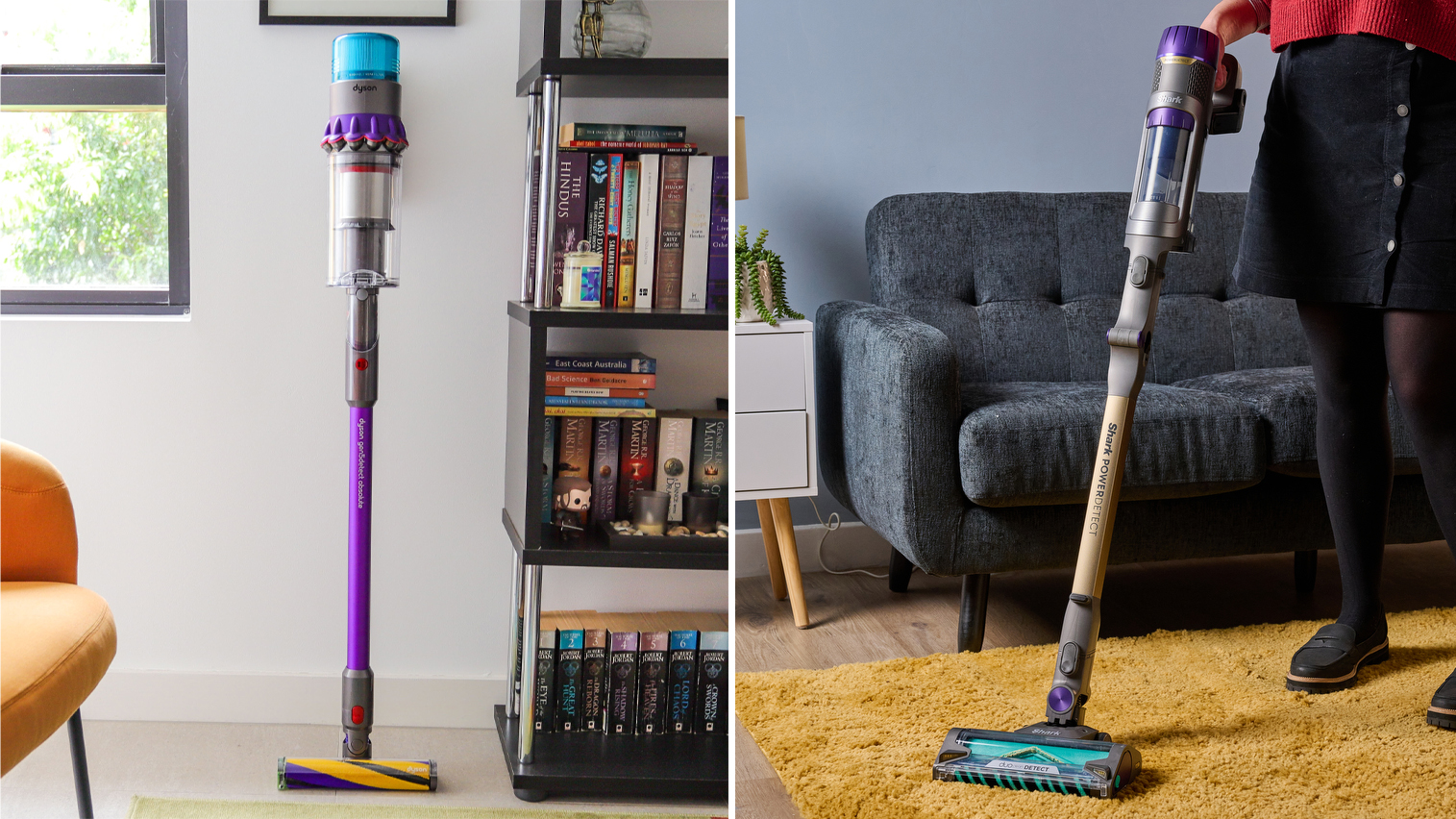
The Shark PowerDetect cordless is more ergonomically shaped. It has a slightly smaller dust cup (0.7L versus 0.8L on the Dyson) but if you opt for the version with the auto-empty base, that won't make much of a difference because emptying it is so darn simple.
Weight-wise, they're fairly similar overall, although the weight is distributed differently. The Dyson motor unit is heavier – and feels noticeably heavy for a cordless stick vacuum – while the Shark model has a weirdly heavy main floorhead and a slightly lighter motor unit. Shark's setup is more comfortable to use; the heavier floorhead helps balance things out. In the grand scheme of things, however, neither is especially light for a cordless stick vacuum – that's the price you pay for extra power and a bigger battery, unfortunately.
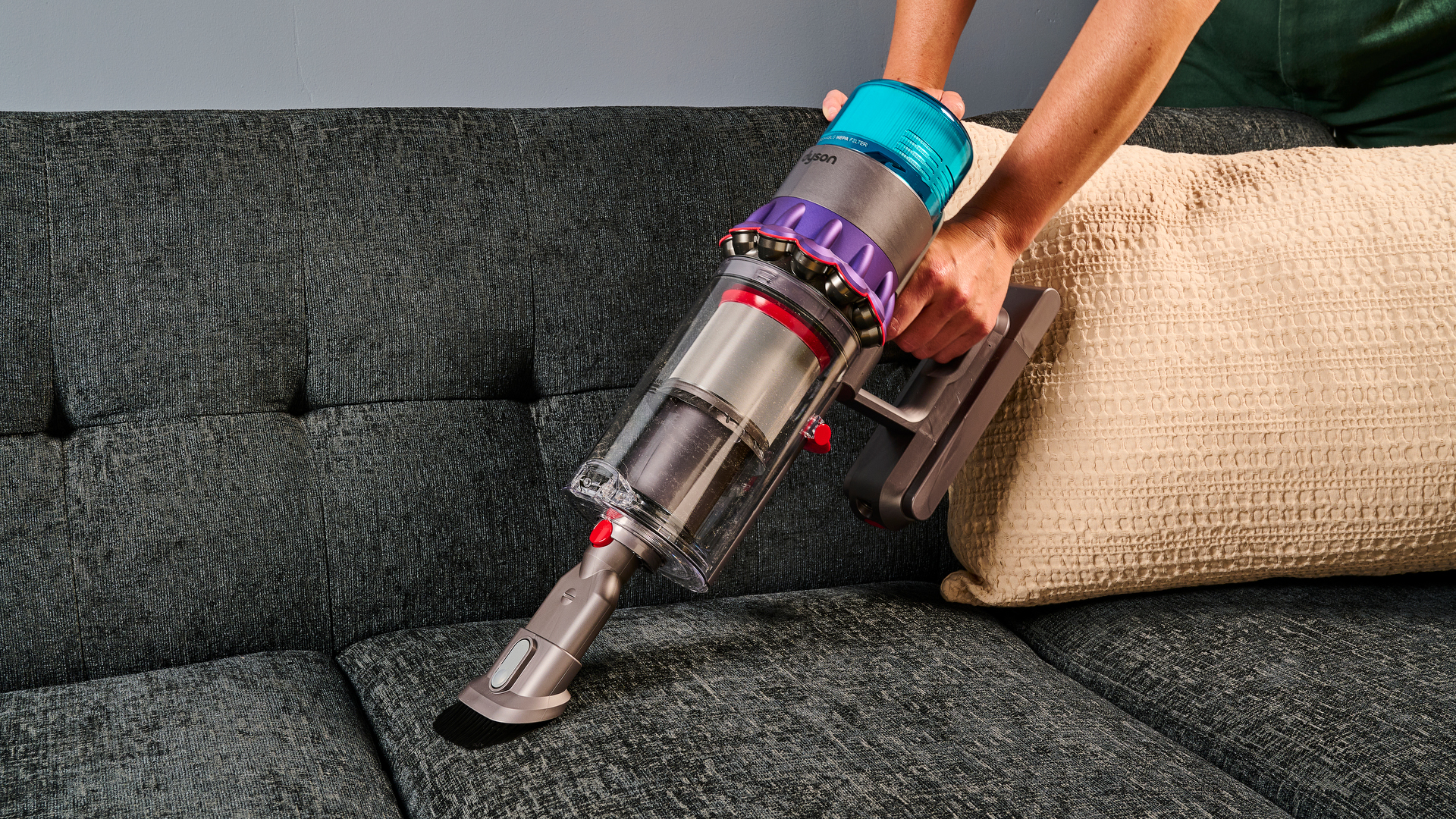
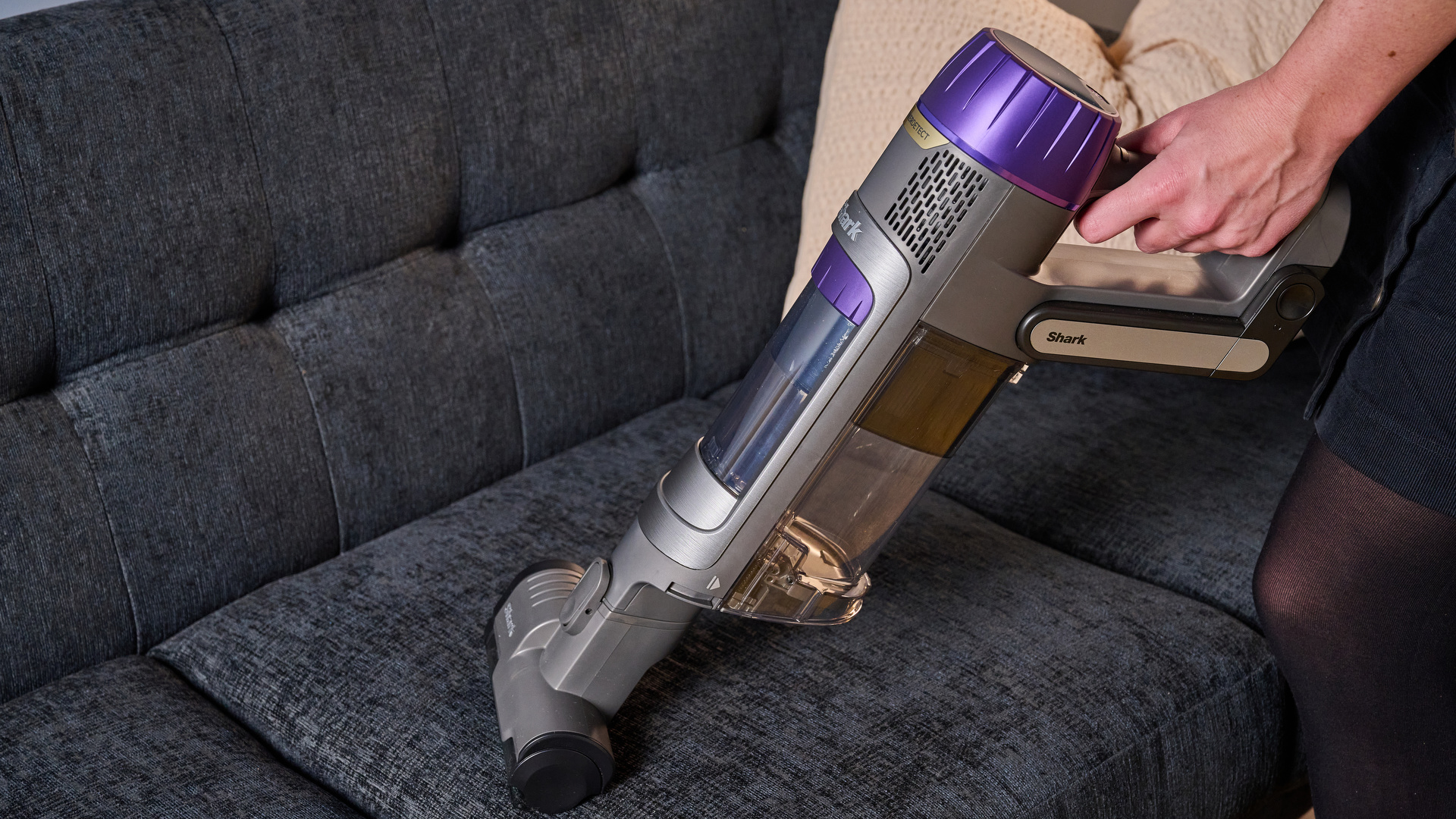
Both switch on via a single-press button, which is good news if you're cleaning for long periods and don't want to end up with a tired trigger-finger. (In fact, this is one of very few Dyson vacuums to use a button rather than trigger, and it's a big improvement in my opinion.)
Blinking LEDs won't cut it at the top end of the vacuum world: both the Shark PowerDetect and Dyson Gen5detect use a nifty color LCD screen to show information. The Dyson screen is more advanced – it'll tell you when the filter needs replacing, and if there's a blockage that needs sorting, for instance, whereas the Shark one is mainly just to inform you which mode you're in and how the battery life is doing. In fact, Dyson's screen has a further trick up its sleeve, but I'll get into that more in the Performance section.
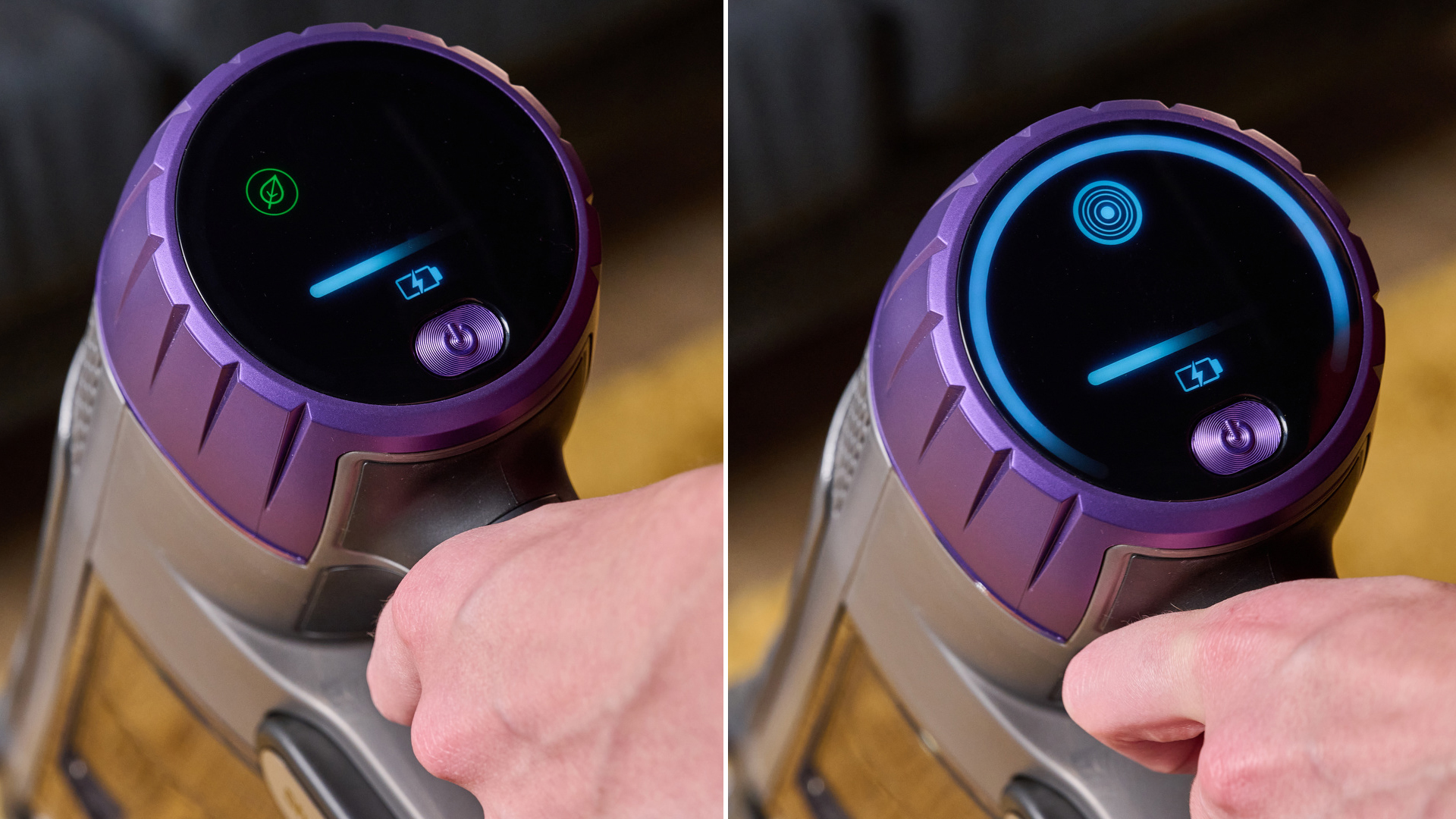
One major potential point of difference is the auto-empty dock. This base not only charges the vacuum and provides somewhere for it to live when not in use, but it'll automatically empty the smaller onboard dust cup into a far larger 2L one in the base whenever the vacuum is docked. If you're dealing with lots of dirt or pet hair, it's a game-changer.
Because everything empties via a closed system, there's far less chance for debris to escape back into the air once it's been sucked up, which is good news for those with allergies, too. Shark has added an anti-odor puck to keep things smelling fresh, even if the base is filled with a couple of months' worth of dirt.
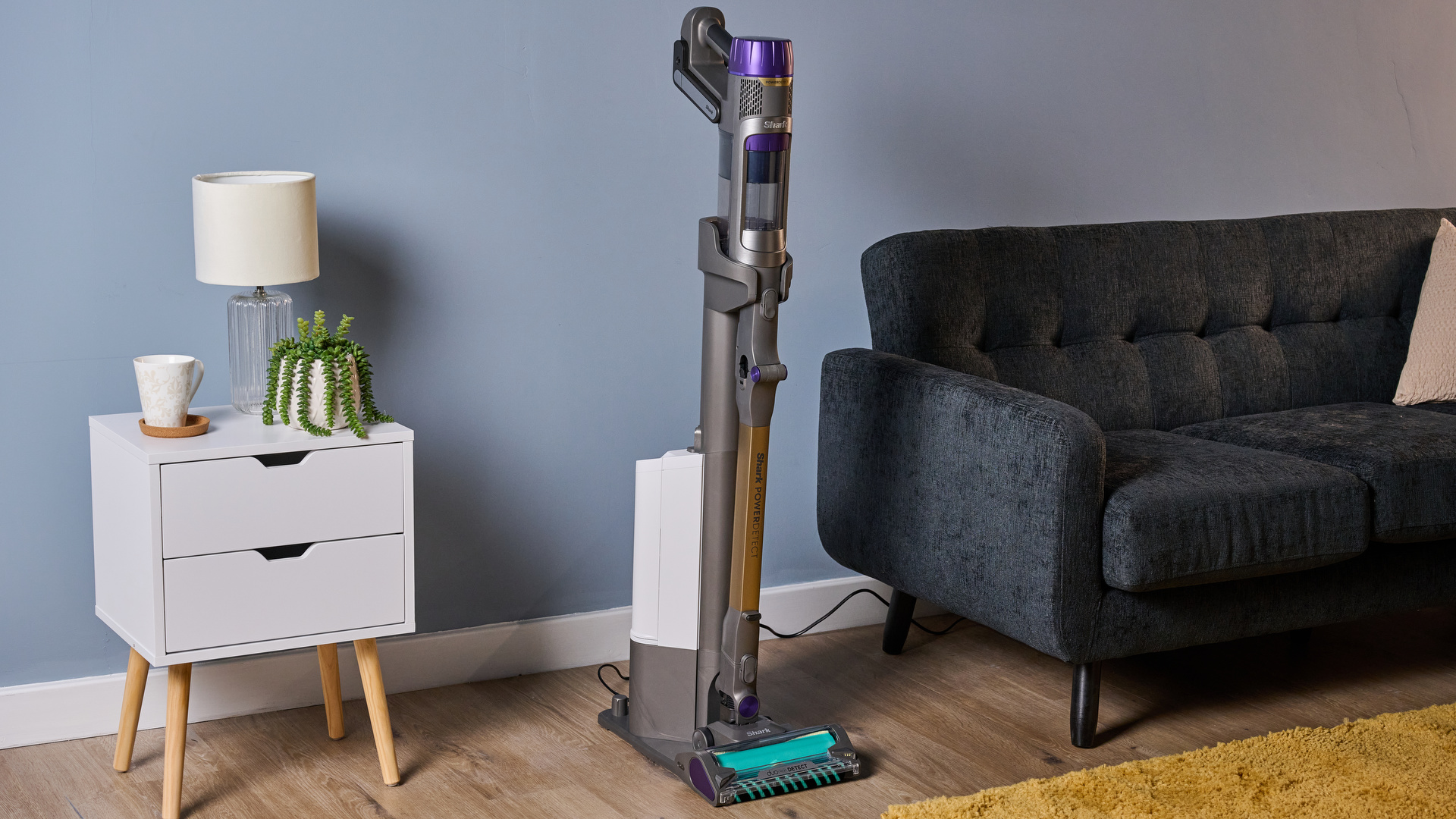
This auto-empty base is a big effort-saver, but it doesn't look all that premium, and you will need space to store it. Dyson does include a wall-mounted charge dock, which is streamlined and looks smart but doesn't offer anything by way of auto-empty features.
Dyson Gen5detect vs Shark PowerDetect Cordless: accessories
- Dyson has a separate, dedicated cleaner head for hard floors
- Both have mini motorized heads for upholstery
- Dyson has a secret crevice tool hidden in its wand
Both the Dyson Gen5detect and Shark PowerDetect have a main floorhead that's suitable for both hard floor and carpet. However, the Dyson comes with a second floorhead that's especially for hard floors. It has a soft roller, which can get very close to the surface of the floor without risking scratching it up.
A further trick here is an integrated laser, designed to illuminate dirt that might otherwise be missed. The Shark vacuum has headlamps on its main floorhead, but these are really just to gently illuminate the way – it's quite a different thing.
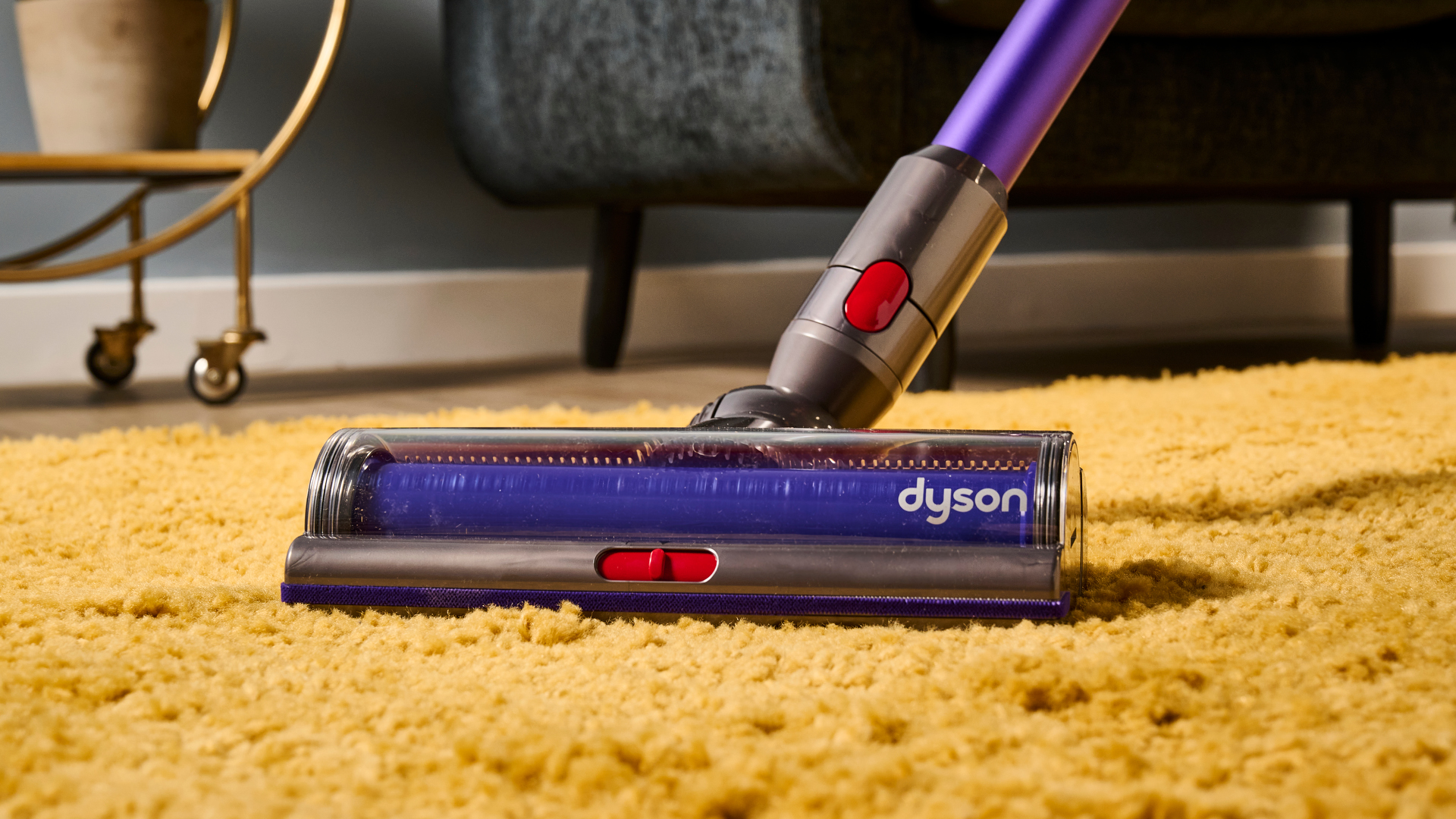

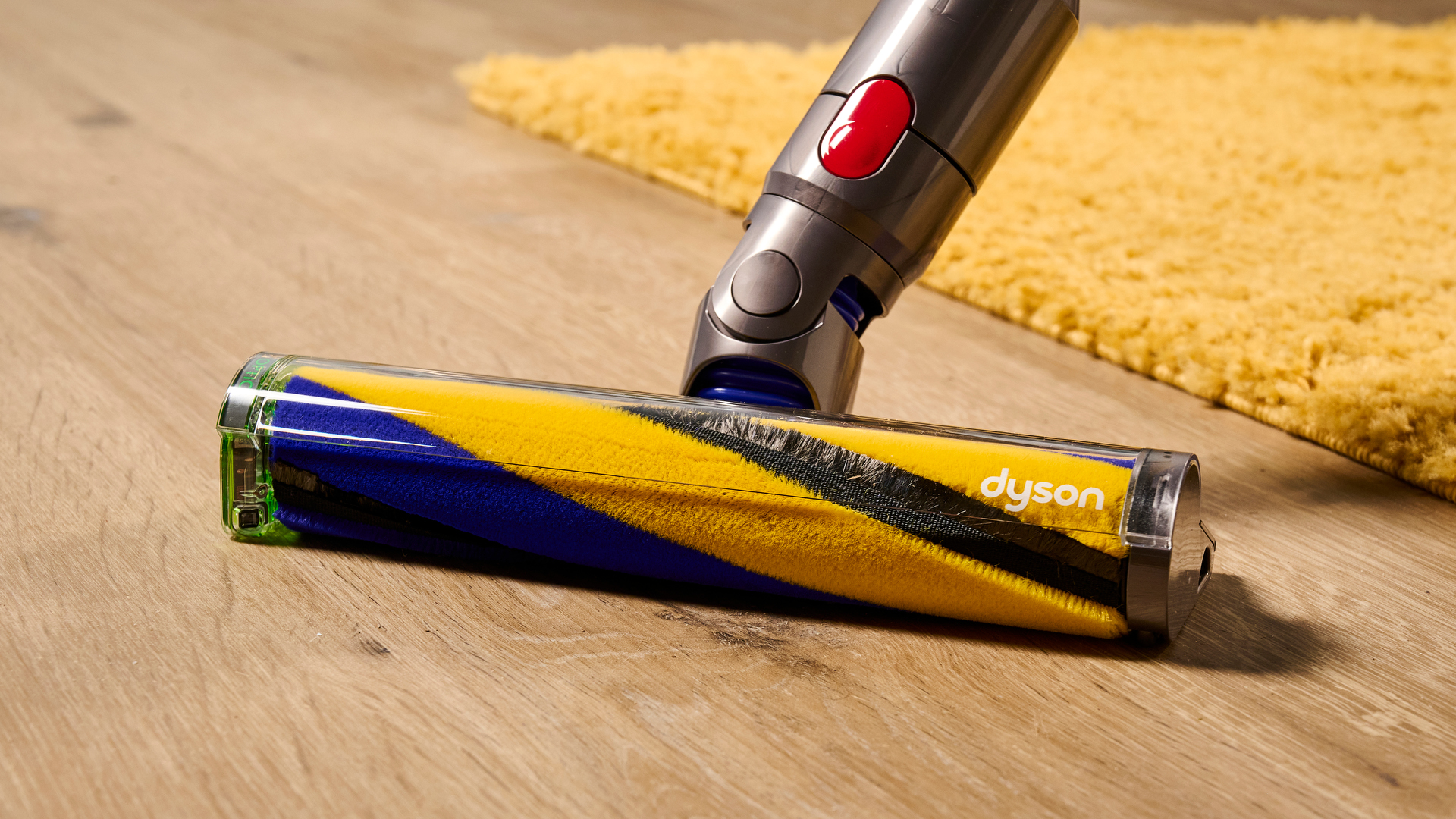
Both vacuums come with an extra, mini motorized floorhead for furniture and upholstery. Dyson's is superior if you live with anyone with long-hair, because the roller is tapered, to whisk hair directly into the bin. It works really very well in practice. While the Shark mini tool is functionally fine, you will need to detangle it on occasion.
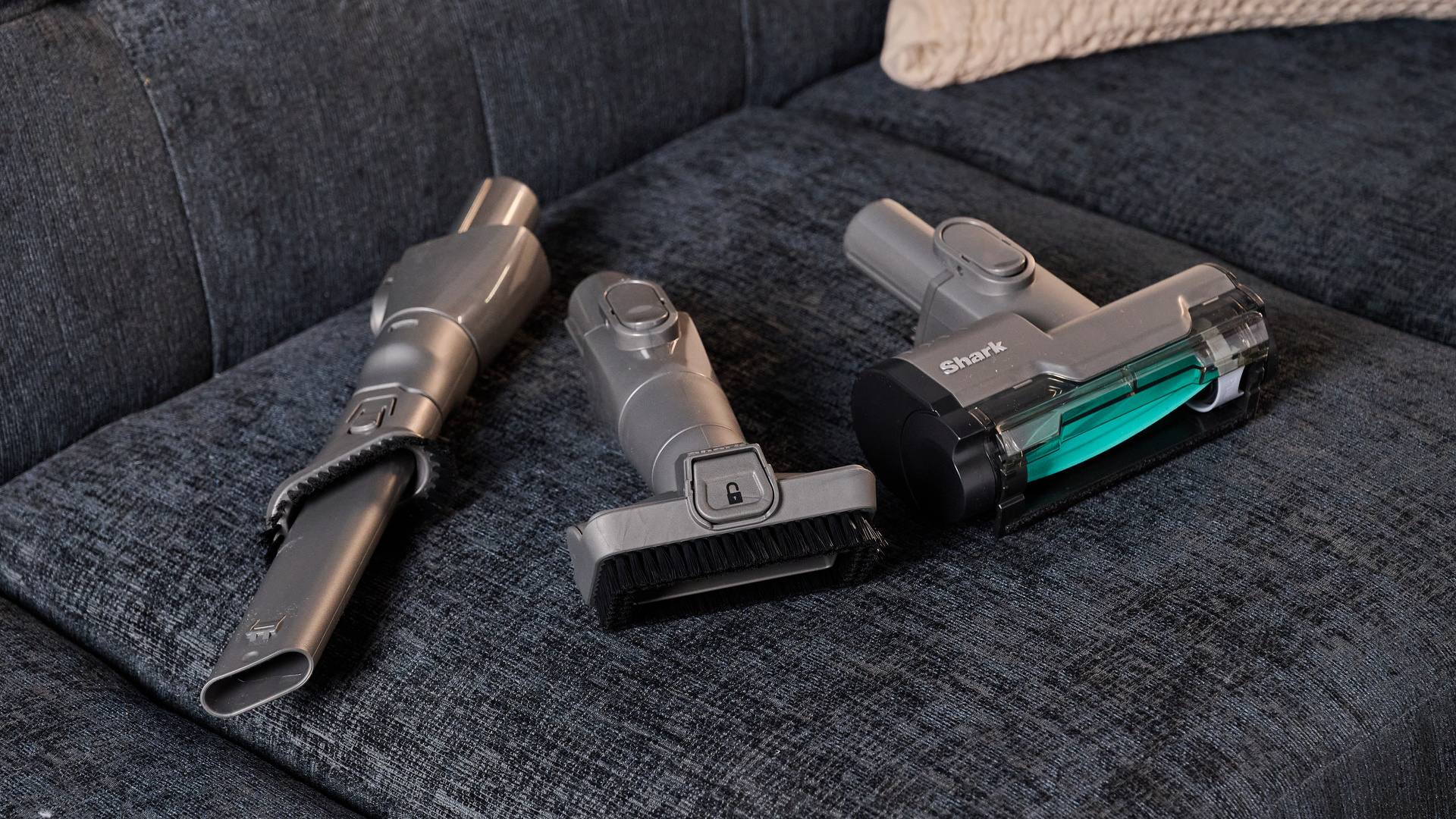
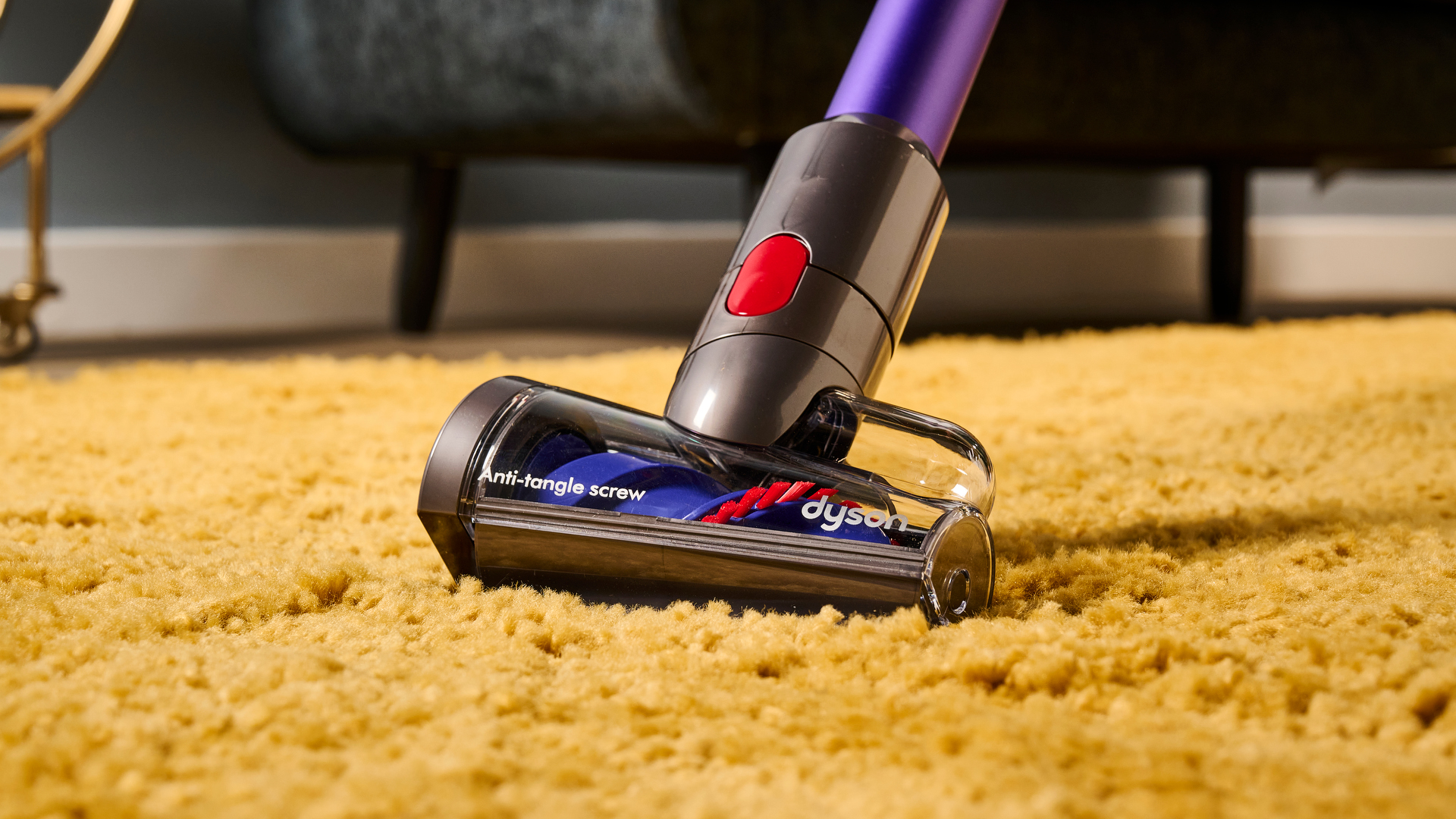
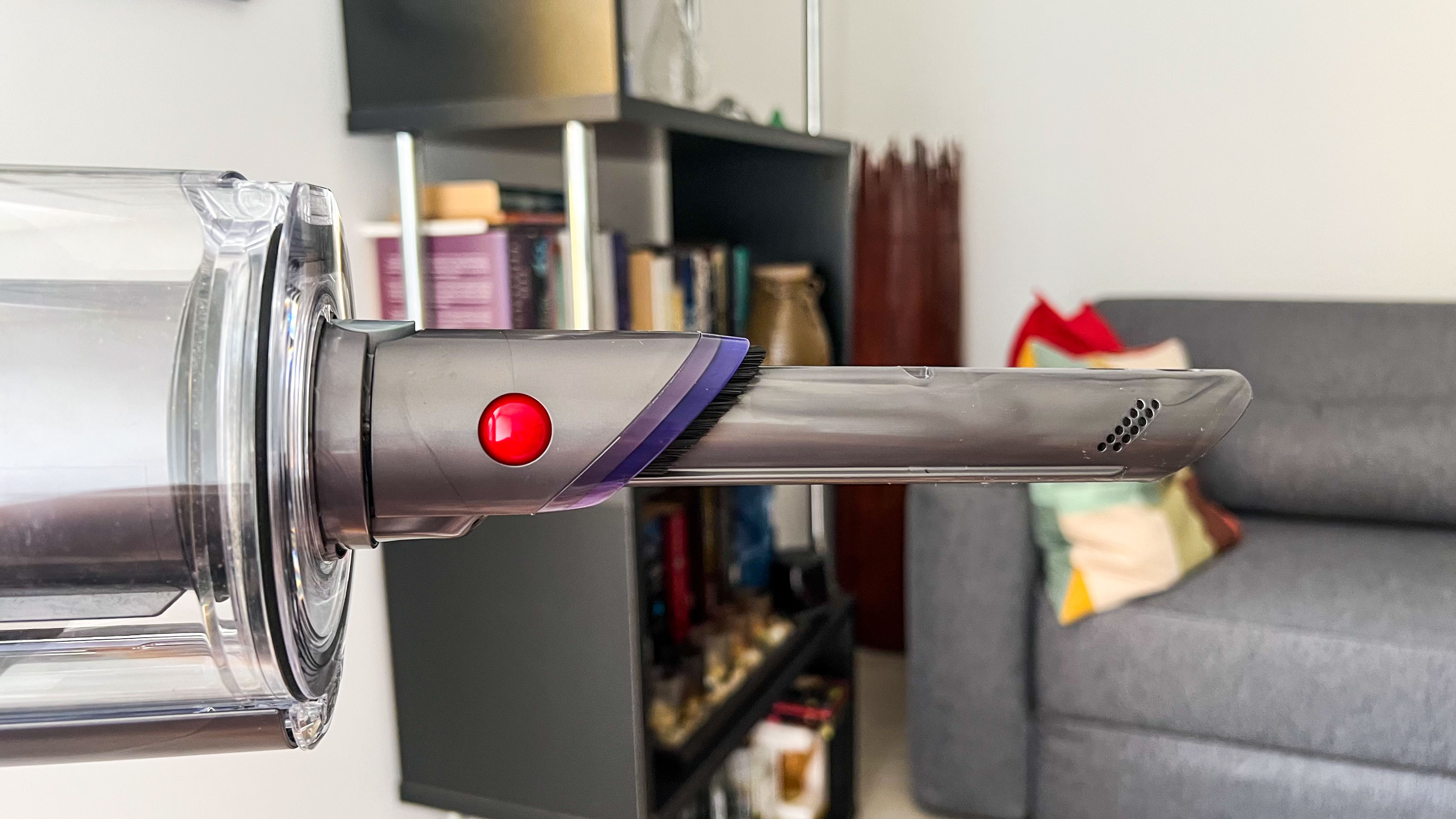
Both the Dyson Gen5detect and Shark PowerDetect come with a good range of extra attachments for detail cleaning. Again, Dyson has a trump card, though, because it has hidden an extra, secret crevice tool in the wand. That means you can tackle small cleanup tasks on the go, without having to return to whenever you're storing your accessories.
Dyson Gen5detect vs Shark PowerDetect Cordless: performance
- Both very efficient cleaners with effective automation features
- Dyson ultra-maneuverable, but Shark has useful forward-bending wand
- Shark is better at edges and large debris
Figuring out how much suction a vacuum has is trickier than it should be, because different brands use different specs, and some don't publish any numbers at all. Shark is a case in point. It's billed as having "Shark's most powerful cordless suction" but with no numbers attached, it's difficult to compare to the Dyson Gen5detect, which comes with a maximum 280AW of power.
On test, I'll just say that both are excellent suckers, and both performed well in our suction tests. For the average person, and the average clean, both will clean equally well. Both have three modes – a low-power Eco mode, a super-sucky Boost mode, and a third, middle mode that'll auto-adjust based on the floor type and how dirty it is.
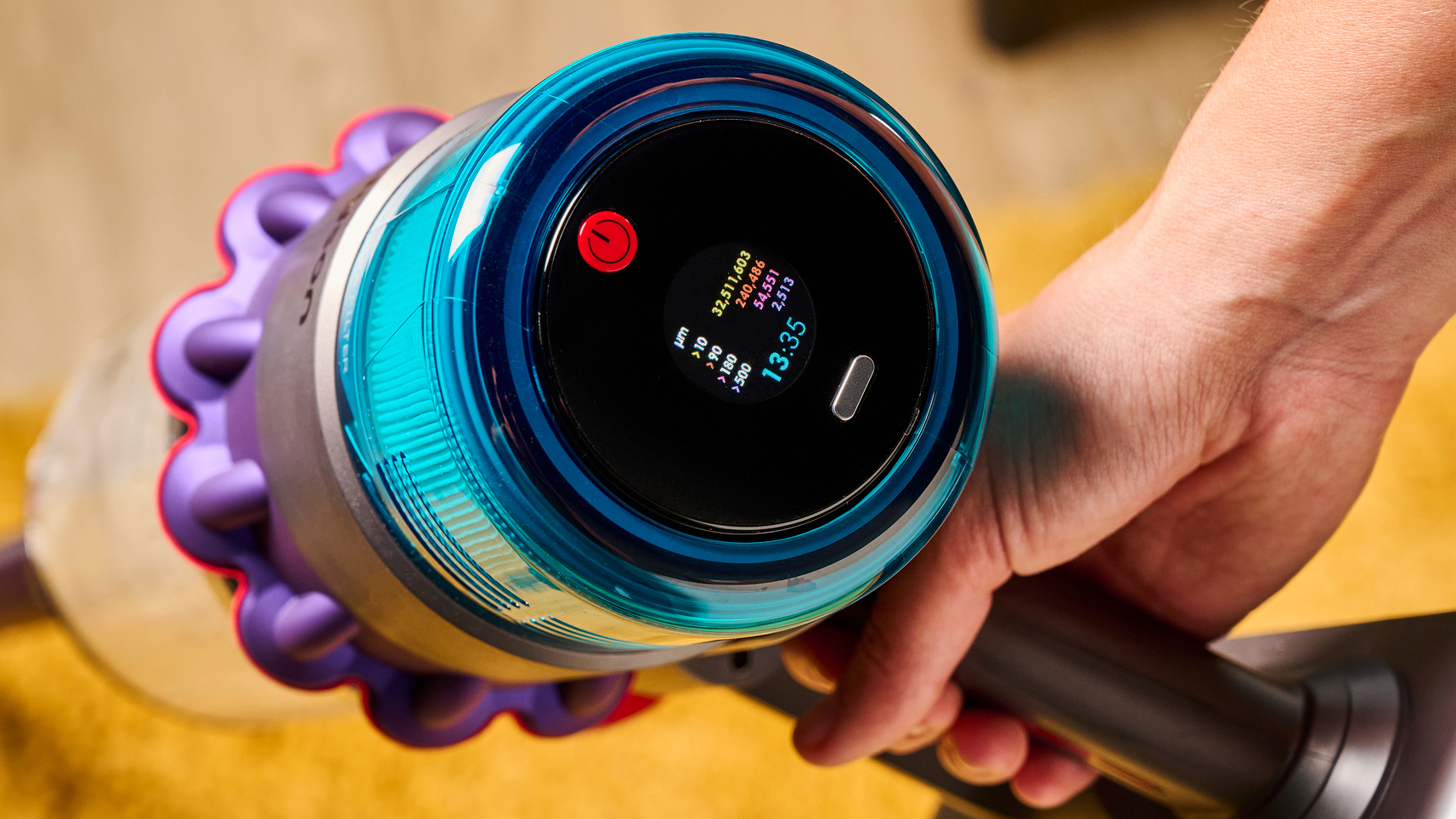
During my tests, I could hear the power ramping up as I shifted from hard floor to carpet, and from a relatively clean patch to a dustier, dirtier one. These features worked reliably well with both vacuums. However, Dyson really wants to you to know what's going on under the hood, so the designers have added a graph on the vacuum's screen that reports the number and size of whatever it's sucking up, in real time, as well as a summary once you're done. I don't think this is strictly necessary, but it is fairly cool, and it's also nice to confirm the vacuum is as clever as Dyson claims it is.
While it lacks real-time dust reports, Shark has a couple of extra features that Dyson does not offer. For one, it will sense when it's getting close to the edge of a room, where dust can collect, and amp up suction just on the relevant side of the floorhead, to clear it. As a result, its edge cleaning powers are excellent, where the Gen5detect's are only good.
The big feature that Shark shouts about on its PowerDetect vacuum is that it can vacuum as well on the reverse stroke as it does when being pushed forwards. In reality, what that means is that the design of the floorhead more open at the back, so debris can pass through and into the path of the suction, rather than pooling up. The Gen5detect's floorheads aren't as good at this, and can push around large debris rather than sucking it up.
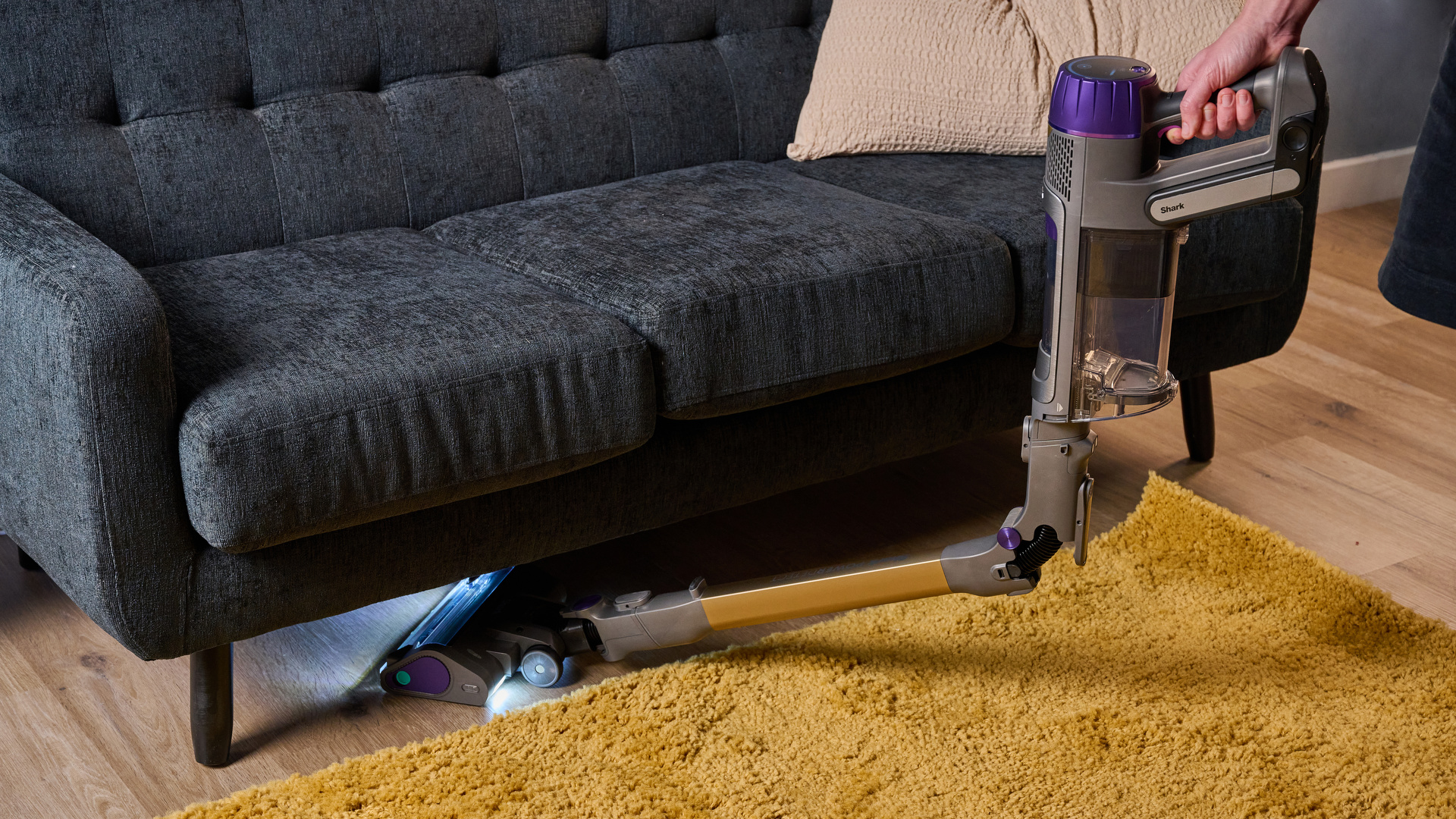
The PowerDetect has Shark's signature bendable wand. Press a button on the front of the wand and it'll bend forward to 90-degrees, to enable you to clean under furniture without having to clamber down onto the floor yourself. This is a nifty feature and it is useful, although when bent forward the wand does become a little wobbly and less easy to control.
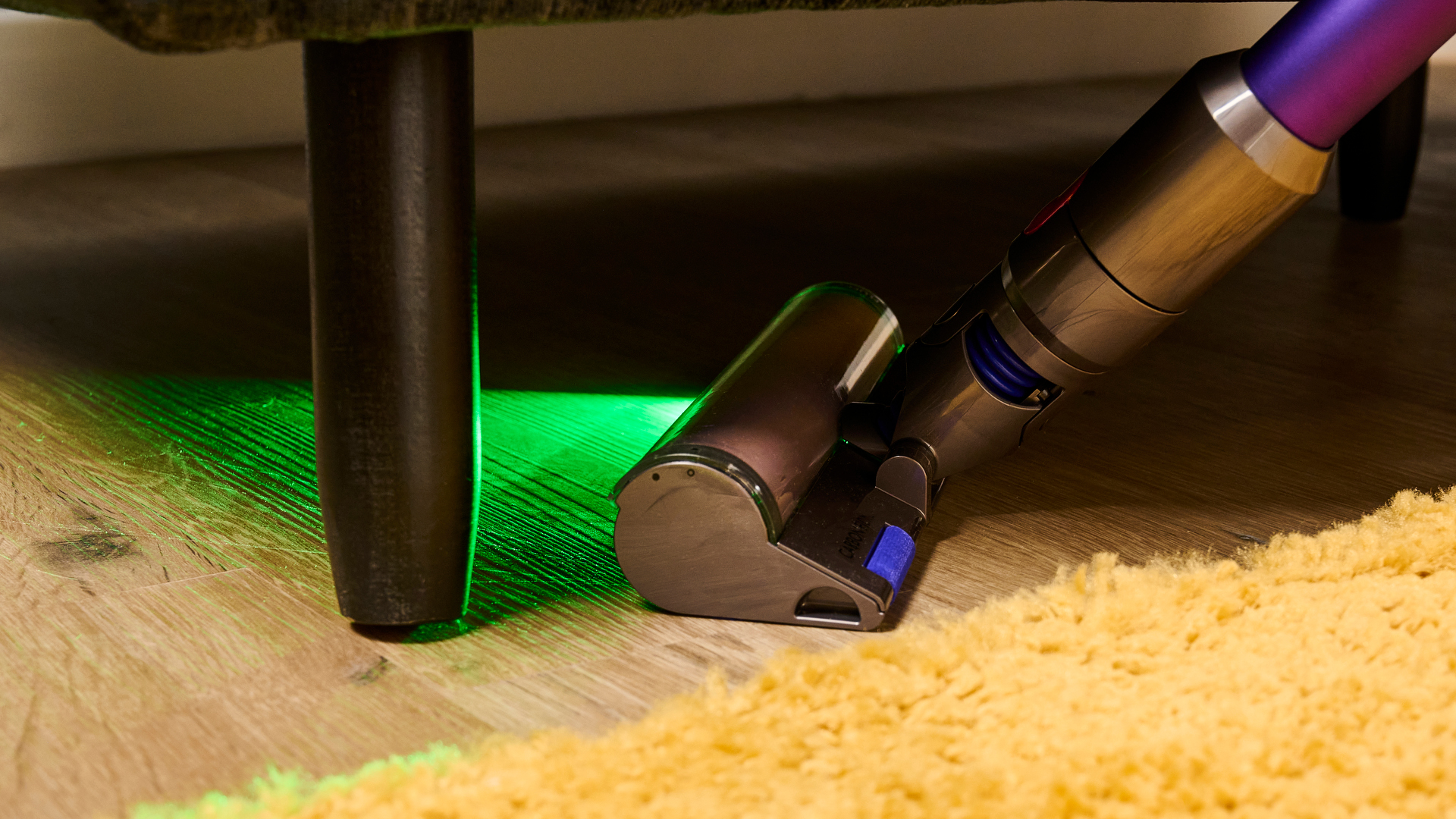
While Dyson lacks the forward-bending wand, it still wins on outright maneuverability. For my money, Dyson vacuums are the most easy-to-steer on the market, and capable of fitting into the tightest nooks and crannies. The wand and floorhead on the Gen5detect can also lie flush to the floor, for cleaning under furniture.
The laser illumination of the Fluffy floorhead does an excellent job of making invisible dust visible, so you can do a more thorough cleaning job on your hard floors. Shark's headlamps are really just for brightening the way, and nowhere near as effective at highlighting dust (although do note the main Dyson floorhead doesn't have lights on at all).
Dyson Gen5detect vs Shark PowerDetect Cordless: battery life
- We managed a max of 67 mins with the Shark; 75 with the Dyson
- Shark lasted 14 mins in Boost, Dyson lasted 15 mins
- Battery can removed and swapped on both
Both of these vacuums offer impressive runtimes. There's a quoted 70 minutes in Eco mode for both, but on test, the Dyson actually seems slightly better – we clocked 67 minutes with the Shark and 75 minutes with the Dyson.
The medium mode is probably what you'll be using most often, and with both vacuums this is designed to offer the most efficient clean with the least battery, thanks to that handy automatic suction adjustment. How long you can clean in this mode will depend on what kinds of floors you're cleaning and how dirty they are.
The Boost mode is designed only for the deepest, most ingrained dirt, and it drained both vacuums' batteries predictably quickly – the Shark lasted 14 minutes and the Dyson lasted 15 minutes.
In both cases, the battery life is excellent, and more than enough for most people's needs. You can remove the battery on either vacuum, which means you could theoretically buy a spare and hot-swap them if you have a particularly large house.







